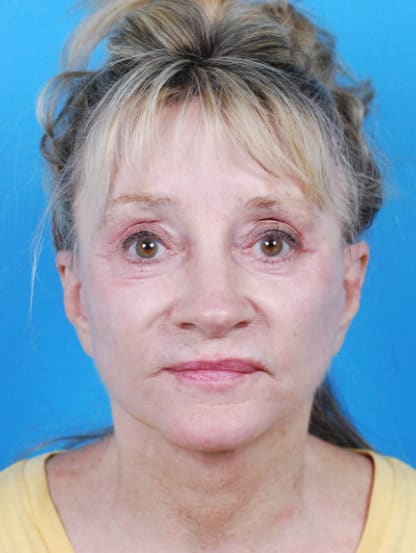
The Skinny
Drooping eyelids or hooded eyelids can be a frustratingly noticeable concern for men and women of all ages (check out our complete guide to Sagging & Hooded Eyelid Concerns). The American Society of Plastic Surgeons (ASPS) reports that over 200,000 blepharoplasty procedures were performed in 2018, making eyelid surgery one of the top five cosmetic surgeries of the year. Eyelid surgery can correct both the upper eyelid and lower eyelid to create a more youthful appearance and, in some cases, improve eyelid function. A plastic surgeon can determine which upper eyelid surgery or lower eyelid surgery is most appropriate. Some candidates may consider augmenting an eyelid procedure with a brow lift or facelift.
AEDIT
Before & After Images by Provider












Before & After Images by Provider
Eyelid Correction Solutions
The Specifics
Who may consider eyelid surgery?
Eyelid malpositioning can refer to a number of upper eyelid and lower eyelid abnormalities. Men and women of all ages who suffer from drooping, sagging, or hooded eyelids may benefit from an eyelid procedure. Some eyelid abnormalities can be caused in part by conditions known as entropion (inward curling of the eyelid) and ectropion (outward curling of the eyelid). The subcategories of eyelid concerns are outlined below:
The Anatomy of the Eye

What can you expect from eyelid surgery?
Most all upper eyelid and lower eyelid procedures are surgical. These procedures are highly specialized to their targeted concern and can create vast improvements in appearance and function.
The majority of eyelid procedures are surgical procedures typically with a few weeks of recovery time. Common side effects include bruising, swelling, pain, and minimal bleeding. Most symptoms can be controlled with cold compresses or ice packs. Different techniques are less invasive than others, and consultation with a certified plastic surgeon can determine which is most appropriate for your unique concern.
**When and why should you consider eyelid surgery?** The nature of your concern will determine the most appropriate time for a surgical intervention. Of course, a good candidate should be in generally good health, have ruled out underlying medical illnesses that may be contributing to eyelid abnormalities, considered needed recovery time, and set realistic expectations of their cosmetic procedure.In the case of genetically sagging or hooded lids, candidates may wish to pursue treatment earlier. For those experiencing age related skin changes, including loss of skin integrity and muscle tone, surgical procedures can be pursued once appearance has become dissatisfactory-the age at which this occurs is unique to every individual.
Blepharoplasty Procedures
Blepharoplasty procedures involve alterations to the skin, fat, and muscle tissue of, and around, the eyelids. These changes can restore upper eyelid and lower eyelid appearance while simultaneously correcting any abnormalities of eyelid function.
Entropion Procedures
This procedure specifically targets an entropion abnormality (inward turning of the eyelid), which more commonly affects the lower eyelid.
Eyelid Malposition Procedures
These procedures are typically used as correctives for previous eyelid procedures or to enhance structure prior to a blepharoplasty.
Eyelid Ptosis Surgery
These procedures alter the underlying structural support of the upper eyelid to move it into a more elevated position correcting drooping/sagging.The Takeaway
We’ve all seen the before and after photos, and, while it might be hard to believe, an expert plastic surgeon can utilize one of the numerous cosmetic surgery upper eyelid and lower eyelid procedures to restore, enhance, and create your ideal eyelid appearance. These surgical procedures are safe, precise, and highly effective. With an eyelid surgery, being self-conscious or hiding behind your glasses is quickly and permanently a thing of the past.





